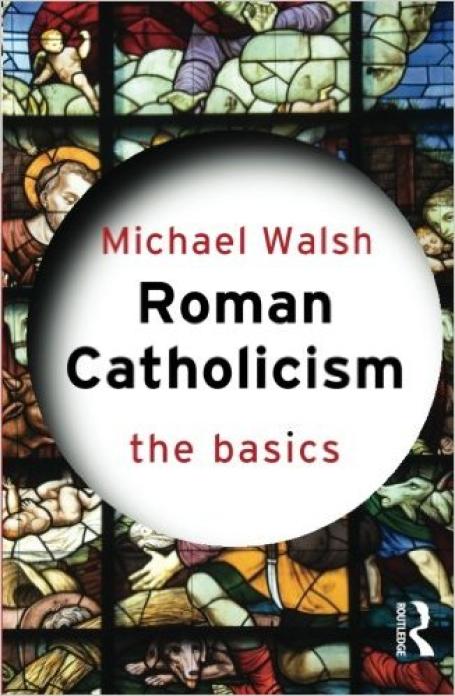Michael Walsh, Roman Catholicism: The Basics (2005), Chapters 1, 5 and 6.
New Testament/Christian Scriptures (New Revised Standard Version), Luke 22:14-23 [Last Supper]; Matthew 6:5-14 [Lord's Prayer]; Matthew 4:13-17 [Baptism]
The Apostles and Nicene Creeds
Although I teach at a college which is rooted in a Jesuit tradition of higher education, I was told that not everyone in my course would have a background in Catholicism. This turned out to be the case when I asked students their goals for the course. Several students said they had enrolled to learn more about Catholicism, offering the rationale that they ought to learn something about it after four years at a Catholic school.
In the first class session, I asked students to identify themselves on an "A, B, C, D" scale indicating their background experience and familiarity with Catholicism. This was in addition to the usual, “Name, Year, and Major” introductory information that I ask for at the start of a course. The "A, B, C, and D" scale was a bit lighthearted in tone, but it helped the students introduce themselves in a pedagogically useful way.
Please indicate what level of background knowledge you have on this topic:
A. I think I’ve heard of Catholicism and the Catholic Church, maybe, at some point, but this is the first time I’ve ever taken a class about it.
B. Maybe I’ve been to Mass with a friend or on holidays once or twice. Maybe I’ve got Catholic relatives, too. I generally know what people are talking about when they use terms like, "the Bible," "Baptism," and "prayer."
C. I have actively participated in Catholic communities from childhood or more recently. I have read the Bible and if someone asks I can give an explanation for things like Baptism, the Sacraments, Mass, and the Trinity. Maybe I’ve taken a class on Catholic theology or ethics.
D. I have studied Catholic theology for multiple years. I know Latin. I bet I could give the Pope a run for his money in a theological debate.
All the students placed themselves in either the "B" or "C" category. I was glad that some said that they were a "B+" or "C-," indicating that these groups didn’t quite fit their own sense of how comfortable they were using Catholic terms and concepts. All in all, I expect this introductions exercise will be most useful as I plan my lecture on the "Catholic basics" for Week 2.
I am using Michael Walsh’s "Roman Catholicism: The Basics" as a text for this unit. Walsh’s book appealed to me for several reasons. First, it is eminently readable. The prose is light without feeling overly simplified. Abstract concepts like "sacrament" are clearly explained. Walsh balances a sense for the continuity of Catholic practice against adaptation and change. Finally, Walsh is a Jesuit and, since College of the Holy Cross is rooted in the Jesuit tradition, for some of my students the text might be familiar in outlook and approach.
